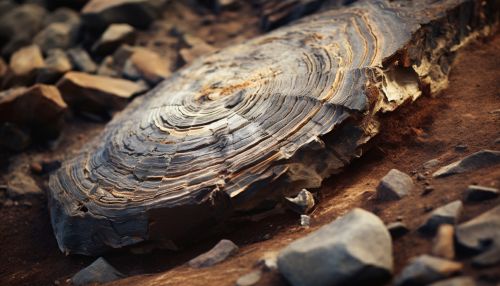Evidence of Evolution
Introduction
The theory of evolution is a fundamental cornerstone in the field of biology, providing a comprehensive explanation for the diversity and complexity of life on Earth. It is supported by a vast body of evidence from various scientific disciplines, including paleontology, comparative anatomy, biogeography, molecular biology, and genetics. This article will delve into these various lines of evidence, providing a detailed and comprehensive understanding of how they support the theory of evolution.
Fossil Record
The fossil record is one of the most direct lines of evidence for evolution. Fossils are the preserved remains or traces of organisms that lived in the past. They provide a historical record of life on Earth and can show how different species have changed over time.


For example, the fossil record shows a progression from simple, single-celled organisms in the earliest layers of rock to more complex, multicellular organisms in more recent layers. This is consistent with the evolutionary concept of gradual change over time, also known as descent with modification.
Comparative Anatomy
Comparative anatomy is another important line of evidence for evolution. This involves comparing the physical structures of different species to identify similarities and differences. There are two main types of structures that are of interest in comparative anatomy: homologous structures and analogous structures.
Homologous structures are physical features that are similar in different species because they were inherited from a common ancestor. These structures may have different functions in different species, but their underlying structure and developmental origin are the same. This is evidence of common descent, a key concept in evolutionary theory.
Analogous structures, on the other hand, are physical features that are similar in function but not in structure or developmental origin. These structures are evidence of convergent evolution, where different species independently evolve similar solutions to similar environmental challenges.
Biogeography
Biogeography, the study of the distribution of species and ecosystems in geographic space and through geological time, also provides evidence for evolution. It shows that closely related species are often found in close geographic proximity to each other. This is consistent with the concept of speciation, where new species evolve from a common ancestor and initially occupy the same or nearby habitats.
For example, the unique wildlife of the Galápagos Islands provided key insights for Charles Darwin in formulating his theory of evolution. Many of the species on these islands are not found anywhere else in the world, but they closely resemble species on the nearby South American mainland. This suggests that the island species evolved from mainland ancestors, adapting to the unique environments of the islands.
Molecular Biology
With the advent of modern genetics and molecular biology, new lines of evidence for evolution have emerged. One of the most powerful is the comparison of DNA sequences between different species. This can show how closely related different species are and provide evidence of common descent.
For example, humans share about 98.7% of their DNA sequence with chimpanzees, our closest living relatives. This is a much higher percentage than we share with any other species, indicating a recent common ancestor with chimpanzees.
Genetics
Genetics provides further evidence for evolution through the study of how traits are passed from one generation to the next. The principles of genetic variation and natural selection, first proposed by Charles Darwin and later confirmed by genetic research, are key mechanisms of evolution.
Genetic variation provides the raw material for evolution, as it results in individuals within a population having different traits. Natural selection then acts on this variation, with individuals that have traits that are advantageous in their environment being more likely to survive and reproduce. Over time, this can lead to changes in the traits of a population, a process known as evolution.
Conclusion
The evidence for evolution is vast and comes from many different scientific disciplines. From the fossil record to comparative anatomy, biogeography, molecular biology, and genetics, each line of evidence provides a piece of the puzzle that, when put together, presents a compelling case for the theory of evolution. It is this convergence of evidence from independent sources that makes the theory of evolution one of the most robust and widely accepted theories in the scientific community.
